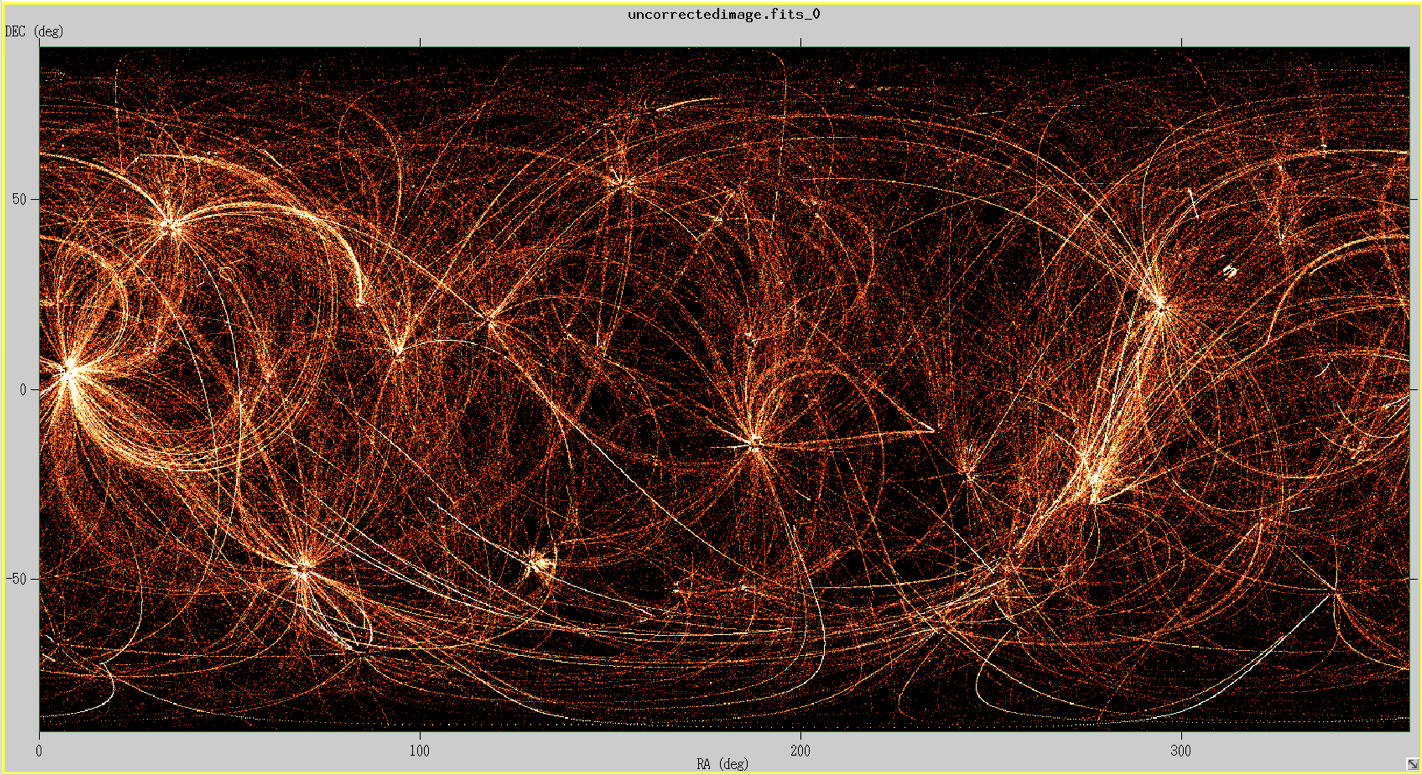NICER / ISS Science Nugget for March 29, 2018Using observations during slew periods for opportunity scienceWhile NICER's primary science involves acquisition of photons from targets that can be tracked with NICER's pointing system, the instrument's detectors remain enabled during orbit-night slews between targets. This allows NICER to extract additional science by looking for new celestial targets along the great arcs that NICER's viewing direction traces across the sky. NICER typically slews 2–8 times each ISS orbit. Attached is the first photon map of the sky extracted by NICER's nighttime slews during the first 8 months of operations. In the image, one can see where these arcs converge on targets that NICER regularly visits. There are also objects across which NICER has serendipitously slewed. This image is a preliminary look, with further processing such as exposure correction still needed. However, even with minimal processing NICER has detected objects such as the Cygnus Loop, a supernova remnant from a star that exploded 5000-8000 years ago that now extends about 3 degrees across (at RA = 313 degrees, Dec = 31 degrees). The NICER team is now working to exposure-correct this image and extract other sources both known and unknown. NICER
|



